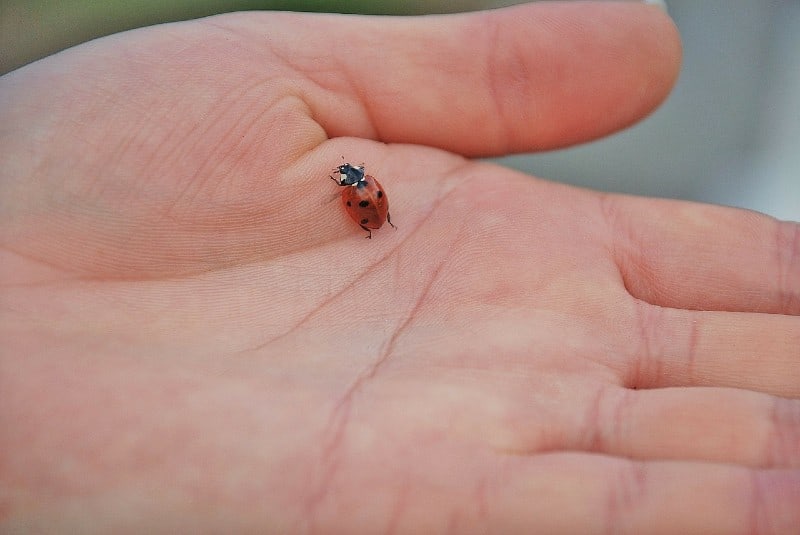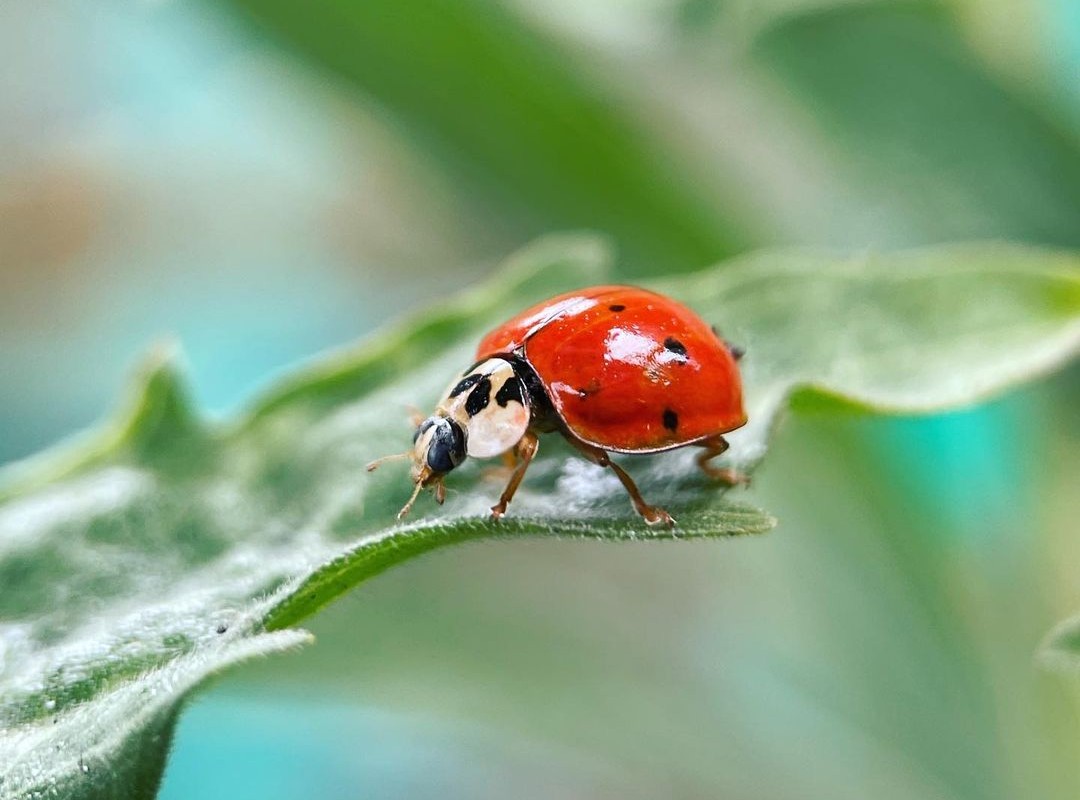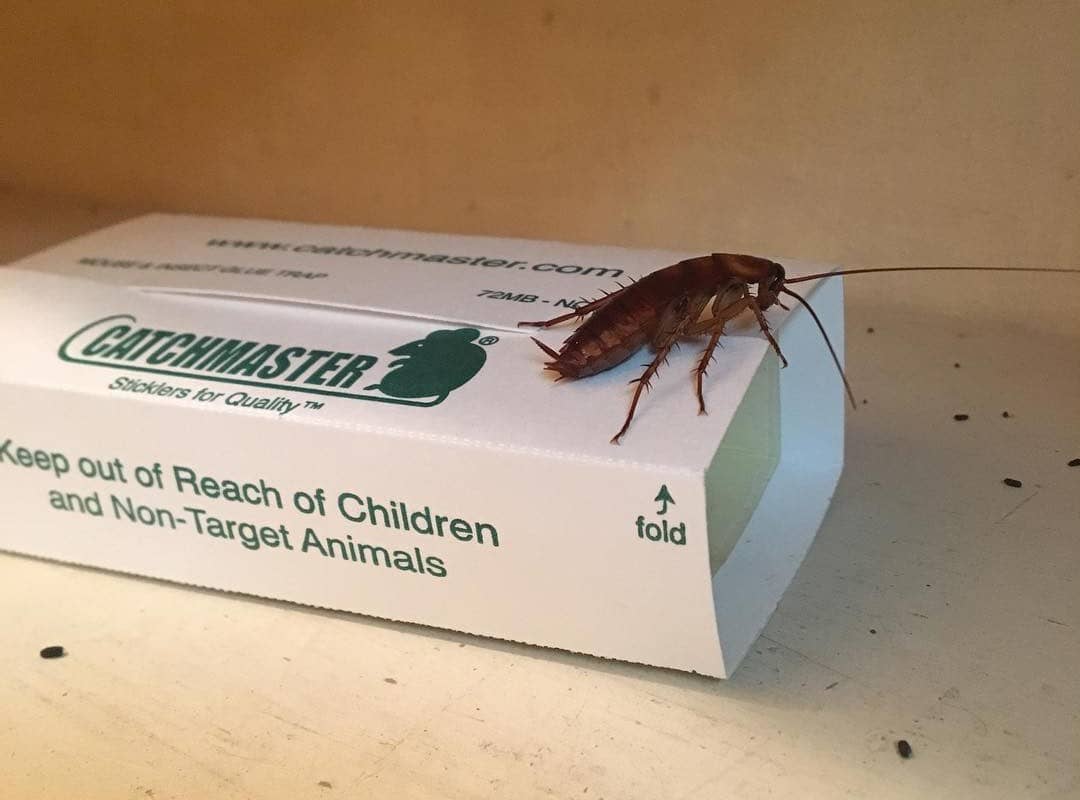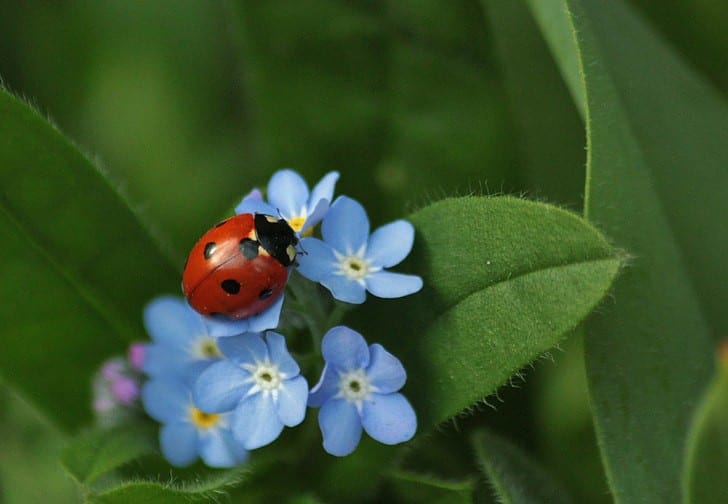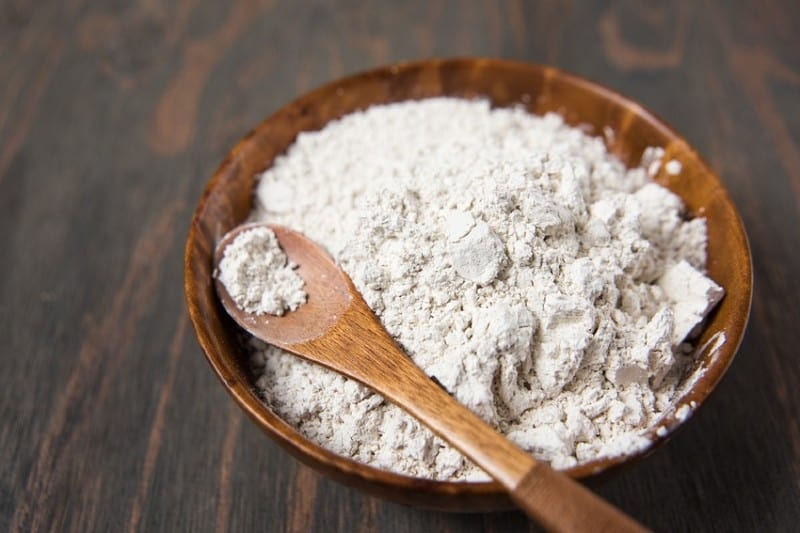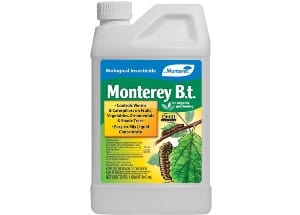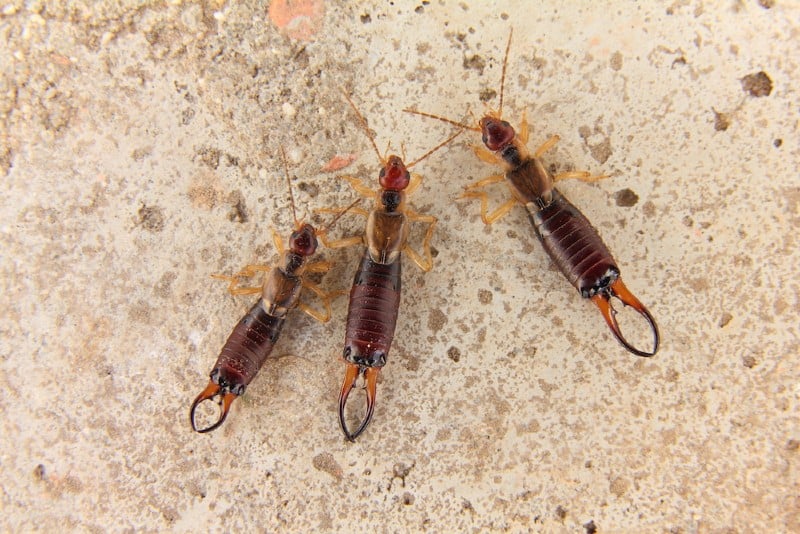Unlike the majority of pests, ladybugs look extremely friendly and cute. They can even be beneficial for your garden as they hunt aphids and spider mites. However, a ladybugs invasion can also be a huge problem if they get into your house and start replicating inside. The problem usually occurs when the bugs are trying to find shelter in the fall, but infestations may last year-round in some regions.
Read my guide to learn how to get rid of ladybugs in your house and be able to prevent re-infestations in the future. I provide comprehensive information about the pest and offer experience-based ladybug control advice along with the best remedy reviews.
What are Ladybugs
Ladybugs or lady beetles are beneficial garden insects that can exterminate spider mites and aphids. There are over 5,000 species of this cure insect around the world. The majority of them consume plant-eating insects, while just a few destroy plants.
Their bright color is a sign to other insects and animals that ladybugs taste awful (their secret tastes foul). Due to high survivability, ladybugs can live up to 2-3 years in the wild.
Ladybug Dangers
Fortunately for us, ladybugs aren’t poisonous to humans. However, some pets can be mildly poisoned if they eat a bug. That’s another reason for timely ladybugs removal from your house. If your pets get into an infestation, they can be harmed. On the other hand, it’s not likely to happen as animals don’t usually avoid eating red and orange creatures instinctively.
Although ladybugs are so friendly and helpful when they’re outside, they can cause some problems if they aggregate inside your house. They’re not noticed to carry diseases, but allergic reactions to their secret may occur.
The signs of ladybug allergy usually include wheezing, itchy skin and eyes, hives, and cough. Ladybug bites aren’t very harmful and feel more like a pinch, but allergic reactions are definitely nasty.
What Attracts Ladybugs in Your House
Sometimes an infestation may start because ladybugs migrate into your house from under the siding of your house or apartment. This usually happens when the insects feel that it’s warmer inside, and the way inside can be found.
Old houses are more exposed to such infestations as they have more cracks around doors, windows, rooftops, etc.
If you see that ladybugs try to settle down in your house in the winter, it means that they couldn’t find a better place to hibernate during the cold season. They usually choose light-colored houses as they look warmer, especially if exposed to the southwestern sun.
Signs of Ladybug Infestation
One or two ladybugs aren’t always a sign of an infestation as they may simply get lost away from their main congregation. But if an infestation begins, the congregations may grow up to 15,000 bugs. If you want to check your entire house for signs of an infestation, it’s a good idea to inspect ceilings, windowpanes, cracks in sidings and crevices, door jams, foundations, gaps behind the walls, etc.
They usually look for warm and secure locations to hibernate until it gets warmer outside. If you don’t notice the congregations in the winter season, you will definitely see ladybugs flying and crawling around the entire house in the spring. No the best thing to happen, so to say.
Other signs of an infestation are multiple yellow stains around your property. Their secretion has a distinctive foal smell. It can be found virtually anywhere, and it’s usually very hard to remove such stains from fabrics, walls, and paint.
How to Control Ladybugs
Getting rid of ladybugs inside your property can be quite difficult as the remedies are limited. The easiest method to remove an average congregation is to remove it with a vacuum cleaner. When the work is done, you should dispose of bugs away from your house. This method is quite safe. I noticed that vacuuming doesn’t make the bugs bleed reflectively.
Other ways to get rid of a ladybug infestation include:
- Light traps – this type of trap attracts ladybugs with bright light and traps them inside so that you can dispose of them safely later on;
- Diatomaceous earth – this all-natural pesticide causes the bugs to die of dehydration;
- Sticky traps – this kind of traps attract lady beetles with a tasty smell.
But what about insecticides? According to the Environmental Protection Agency, pesticides may impact indoor air quality, so the best solution is to avoid indoor use.
On the other hand, I know several remedies that have soft but effective compositions that are designed for indoor use. Precautions are necessary to keep the dangers of using indoor ladybug treatment low. Harris Ladybug killer is an excellent solution. See my experience-based review below.
How to Prevent Ladybugs in Future
After treating the infestation successfully, you should stop ladybugs from coming into the house in the future. Here are some of the best practices that will help you to prevent reinfestations:
- Make repair works during the warm season. I recommend you seal any cracks, check all the window screens, and inspect your roof, foundation, and siding to fix any visible damage.
- Clean surfaces with citrus oil. This will help you to get rid of ladybug scents. Ladybugs won’t be able to find a way back to your house if you remove their traces.
- Lavender – this plant has a nice scent, but ladybugs don’t like it at all. Use it as a repellent.
- Bay leaves and cloves – put them around the house or plant outside.
- Mums – these flowers are deadly for ladybugs but safe for your pets and children. You can plant them around the house year-round to deter ladybugs.
Top 3 Best Ladybugs Treatments
Here are the most useful lady beetle treatments that you can order at the moment to stop the infestation in your house quickly. Each of these products has been tested multiple times on infestations of different levels.
1. BUGGSLAYER Insecticide Concentrate – Best Outdoor Ladybug Killer
Specifications:
- Item Form: Liquid
- Item Volume: 16 Fluid Ounces
- Item Weight: 9 ounces
- Item Dimensions LxWxH: 1.8 x 3.8 x 7.4 inches
- Target Species: lder Bugs, Stink Bugs, Asian Lady Beetles, Ants, Spiders and many other common insect pests
Buggslayer Insecticide has a rough formula that wards off over 50 species, including ladybugs, stink bugs, and the most severe Asian lady beetles. You can use this contact insecticide to create a barrier around your property. I recommend you treat areas around the windows, doors, roofing, and foundation.
Unlike the ladybug secretion, this remedy doesn’t leave any stains on surfaces and doesn’t smell at all. This remedy is also highly cost-effective. You should mix only 4 ounces of the liquid to 1 gallon of tap water to achieve the needed effect.
At the same time, the dry water-based solution cannot be washed away with rainwater and humid air. A single treatment will remain effective for 3-4 weeks. If the climate in your area isn’t too humid, the effect may last up to 6 months. In this case, you should treat the area only twice a year.
If a bug tries to cross a treated area, it doesn’t die immediately. Instead, the microcrystals stick to its body and intoxicate it to death in 1-4 hours, depending on the specie and concentration of the solution.
I recommend this outdoor treatment for all cases of outdoor infestations and for keeping ladybugs away from your home. Use it following the instruction and renew the treatment when you notice breaches. It’s also a good solution to fix the cracks in your house, along with treating the area regularly.
| Pros: | Cons: |
|
|
2. HARRIS Asian Lady Beetle Killer – Best Indoor Ladybug Killer
Specifications:
- Item Form: Spray
- Item Volume: 32 Fluid Ounces
- Item Weight: 2.42 Pounds
- Item Dimensions LxWxH: 5 x 3 x 12 inches
- Target Species: Lady Beetles
Harris is a trusted American manufacturer of pest control solutions. They provide their 1-gallon indoor ladybug killer with a convenient trigger sprayer and an extension pipe so that you can spray the liquid with one hand and hold the bottle in another at the same time.
The composition of the remedy is secure for the household as it doesn’t attract pets with odors and doesn’t cause respiratory problems. I recommend reviewing the composition to see if you don’t have an allergic reaction to any of the components to make sure that it’s totally safe for you.
While the spray is odorless, it also doesn’t leave stains on any material so that you can treat infested surfaces (including fabrics) all around the house. The Environmental Protection Agency officially allows residential usage of this remedy, so there’s no need to worry.
You should spray it in the basement, ventilation, under the furniture, and under the roofing to achieve the needed protection for several weeks. The spray starts working when it dries completely. It takes around 2 hours to dry.
Before that, you should keep all the pets and children away from the treated area.
The brand also claims that the spray can be used outside, but you’d better get the Buggslayer for that as the killer by HARRIS doesn’t stand the rain, and it’s not concentrated, which means you will finish the bottle much faster.
It’s also not very efficient if you apply it on south-facing walls as direct sunlight makes the product ineffective. That’s why I recommend purchasing both solutions if the level of the infestation requires indoor and outdoor treatment.
| Pros: | Cons: |
|
|
3. Catchmaster 72MAX Pest Trap – Best Glue Ladybug Trap
Specifications:
- Color: White
- Scent: Peanutbutter
- Item Weight: 11.2 Ounces
- Item Dimensions LxWxH: 8.5 x 5.25 x 0.05 inches
- Target Species: Mice, Snakes, Crickets, Bats, Fleas, Ticks, Mites, Lice, Roaches, Brown Recluse Spiders and other potentially disease transmitting insects
The Max Catch glue trap by Catchmaster is a simple and effective way to attract and trap ladybugs. The trap consists of cardboard coated with non-drying glue and a peanut butter aromatizer. You can either put the cardboard on the floor flat or fold it to make a box. Put it near an infestation, and just look at how bugs start crawling towards the sweet thing.
How to kill ladybugs after you catch them? They will stick inside so that you can just throw away the board when it’s full. There’s no need to kill them. However, I recommend treating the house with some natural repellents to get rid of the ladybug scent that attracts new insects. This item is recommended for indoor use only, and you should place it only if you’re sure that your pets won’t stick to it.
| Pros: | Cons: |
|
|
FAQ
Still have questions? Here are concise answers to the most frequently asked questions about ladybugs from my readers and customers. Take a quick look through them to make sure you know everything.
Why are there ladybugs in my house?
First of all, lady beetles and other insects get into your house because they can! It means that your dwelling has breaches somewhere. Second, they feel that it’s warmer inside than outside, so they start migrating if there’s an opportunity for that. Combine these two reasons, and you will understand why ladybugs infest your house in the winter.
Where do ladybugs nest?
Ladybugs always choose secure and warm places to nest. You can usually find them here:
- Ceilings;
- Windowpanes;
- Cracks in sidings and crevices;
- Door jams;
- Foundations;
- Gaps behind the walls.
Why do ladybugs stink?
According to ladybugs smell studies by Iowa State University, the noxious ladybug odor is due to 38 compounds, with DMMP and IPMP playing the major role. These beetles need the smell to give a threatening signal to other animals and ward them off in case of danger. If an animal tries to eat a ladybug, it will feel a disgusting taste.
Does diatomaceous earth kill ladybugs?
Yes, diatomaceous earth is a powerful natural ladybug extermination remedy. It causes bugs to dry and die quite fast. It may not be similarly effective against other insects, but lady beetles rarely survive it.
What repels ladybugs the best?
The most effective ladybug repellents include:
- Citrus and citronella oils;
- Lavender;
- Bay leaves and cloves;
- Mums;
- Absence of breaches to sneak in through.
Bye, Ladybug!
Now you know how to get rid of and keep ladybugs away from your home in a number of relatively simple ways. If the situation gets tough inside, try Harris Asian Beetle Killer and a Catchmaster trap. For outdoor use, I recommend BUGGSLAYER Insecticide Concentrate. Stick to instructions and my advice, and you will definitely succeed.
Is it the first time you have a ladybug infestation? If not, what did you do to fight the previous one? Share your experience, and we’ll discuss the problem together in the comments section below.
If you are facing an Asian ladybug infestation, you should take a look at my guide on the topic. For more tips and experience-based product reviews, keep clicking my website.
References:
- Pesticides’ Impact on Indoor Air Quality (U.S. Environmental Protection Agency):
https://www.epa.gov/indoor-air-quality-iaq/pesticides-impact-indoor-air-quality - U.S. EPA, Pesticides, Label, Harris Home Pest Control (U.S. Environmental Protection Agency Washington):
https://www3.epa.gov/pesticides/chem_search/ppls/000003-00011-20110510.pdf - Why do Ladybugs Smell Bad? (Iowa State University):
https://lib.dr.iastate.edu/cgi/viewcontent.cgi?article=1231&context=abe_eng_conf
Contents
Why You Should Trust Pest Control Hacks?
We know that pests are nasty neighbors, and it can take months to eliminate them without the right approach. Our experts use their own experience to compile articles and guides that are introductory and informative. Our authors’ opinions are independent and based on the results of practical testing of pest control tools. We do not notify manufacturers of testing of their products and do not receive payment from them for posting their items. Also, our texts are never submitted to company representatives for proofreading before placement. On the site, you will find exclusively objective ratings and reviews.


